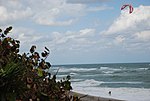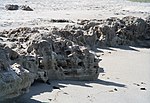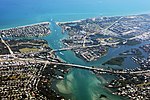Jupiter Inlet Historic and Archeological Site
Archaeological sites in FloridaNational Register of Historic Places in Palm Beach County, FloridaNative American history of FloridaPalm Beach County, Florida Registered Historic Place stubs

The Jupiter Inlet Historic and Archeological Site is an archaeological site in Jupiter, Florida. It is located off A1A in the area of DuBois Park. An ancient shell midden built by the Jaega people, it was the site of the village of Hobe (or Jobe in Spanish orthography), which was later conflated with Jove and inspired the name of the town of Jupiter, Florida, where it is located. On November 5, 1985, it was added to the U.S. National Register of Historic Places.
Excerpt from the Wikipedia article Jupiter Inlet Historic and Archeological Site (License: CC BY-SA 3.0, Authors, Images).Jupiter Inlet Historic and Archeological Site
Ocean Trail Way,
Geographical coordinates (GPS) Address Nearby Places Show on map
Geographical coordinates (GPS)
| Latitude | Longitude |
|---|---|
| N 26.94 ° | E -80.07 ° |
Address
Ocean Trail Way
33477
Florida, United States
Open on Google Maps







